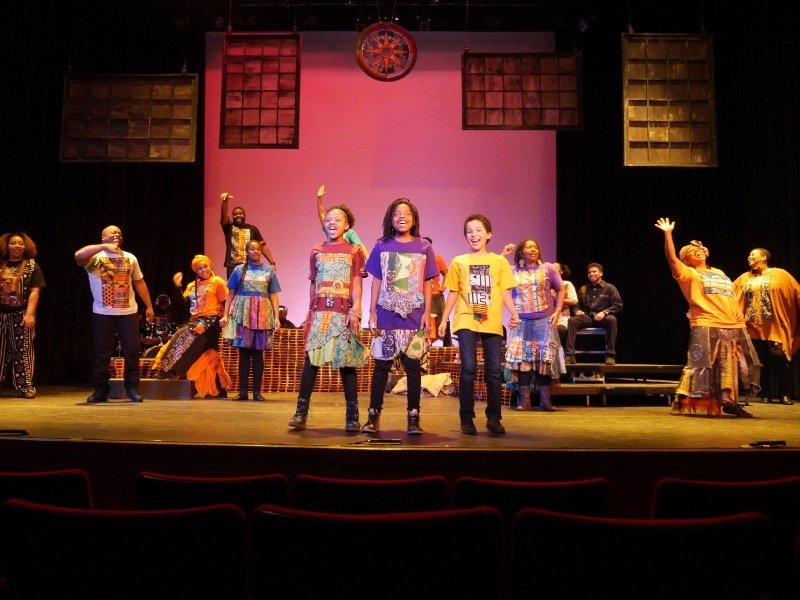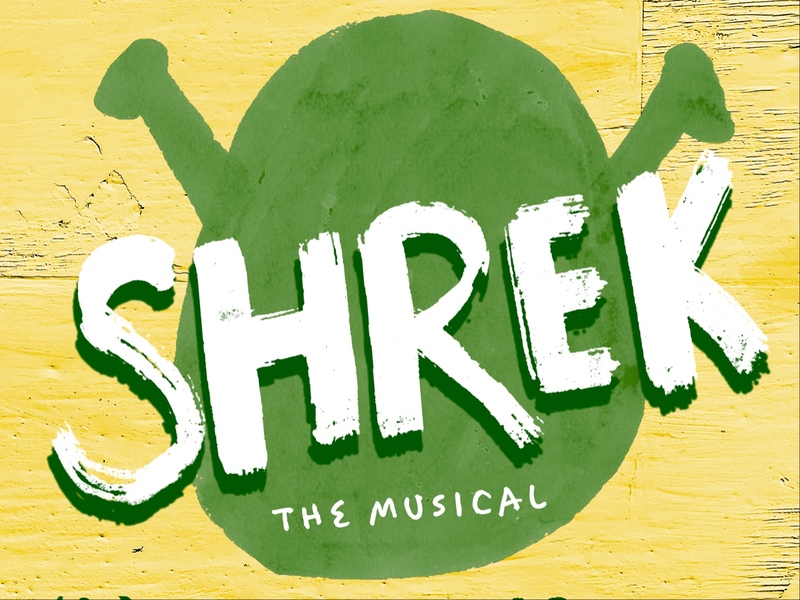As theater patrons make the rounds of holiday offerings this December, there are very few performances that are surprising or new. After all, part of the joy of attending "The Nutcracker," "A Charlie Brown Christmas" or "A Christmas Carol" is tradition.
It’s an annual re-telling of beloved stories and the joy of sharing those treasured productions with the next generation, young people who will also associate Scrooge, Snoopy and Clara with the celebration of Christmas, along with all the candy, lights, presents and decorations that make this darkest part of the calendar year so bright.
So it was startling – and wonderful – to attend the opening night of "Black Nativity" in Vogel Hall. Presented by Black Arts MKE, in collaboration with the Marcus Center for the Performing Arts, the gospel play by Langston Hughes is a joyful and fresh take on the biblical story of Christ’s birth. But it’s also so much more. It’s about the intervening 2,000 years, filled with spirituality, suffering, injustice and strength, viewed through the lens of the black community. In ways that some Christmas performances struggle to do, "Black Nativity" makes a familiar story strikingly fresh and relevant, beginning in the manger in Bethlehem and concluding with a celebration of faith in modern day.
On a simple stage of black platforms edged with bright orange construction netting, a small group of children begin the show with a heartfelt "Joy to the World" harkening back to nativity plays presented in Sunday Schools. After these tiny voices set the scene, the theater explodes with jubilant, full-throated gospel songs and soulful spirituals that fill the theater for the following two hours.
In solos, small groups and full ensemble numbers, the 15-person cast shows off its tremendous vocal talent, emotional depth, and versatility, as the group segues from song to song, and style to style. While some numbers are holiday standards, such as "Come All Ye Faithful" and "Go Tell it On The Mountain," others may be new to audiences, such as "No Room At The Inn," "What You Gonna Name Your Baby" and "Leak in the Buiding." Actors rap in the hard-edged "No-Good Shepherd Boy," and the younger cast members begin "What Month Was Jesus Born In?" as a hand clapping nursery rhyme, which expands across the stage and ends in an impressive step dance.
Both Shawn Holmes and Marcus McFarlin used their resonant voices to make joyful noises, as did Natalie Harris, who was particularly delightful to watch. Likewise Camara Stampley turned in an impressive performance as the Virgin Mary, and Cynthia Cobb nearly stopped the show with her operatic pleading with the shepherds to leave their flocks to come worship Jesus. Krystal Drake radiates both pain and determination in the second half of the show as a woman whose faith is tested, but finds a way to persevere.
In an absolutely perfect collaboration, Demar T. Walker’s choreography is as striking when it’s frenetic as when the cast stands perfectly still. An associate artistic director of Ko-Thi Dance Company, he uses his expertise in dance forms from the African diaspora to the fullest. Memorable stage pictures include the circle of women dancing in support and protection of Mary as she gives birth; the militant, angular movements of the men and women condemning a lazy shepherd; and the entire cast inching forward onstage slightly to the rhythm of a heartbeat, as well as many ambitious dance combinations that the ensemble performed with crisp specificity and energy.
The formidable costuming challenge for the show was handled with stunning creativity by wearable art designer Beverly Echols. Her exuberant patchwork creations paired panels of vibrant batiks and kente cloth with jeans, T-shirts and skirts in the first half of the show, then switched to more traditional street clothes and gospel choir uniforms for the second half. In between, she created a truly radiant angel costume, a shimmering white poncho over a long white dress trimmed in gold and several ensembles of black leather topped off with crocheted hats that recall the Black Power movement.
Director Malkia Stampley not only does a masterful job keeping the basic biblical story moving forward with very little dialogue between scenes, she showcases each cast member in moments where they shine brightest. And in the second half of the evening, when the focus of the story moves to contemporary worship and continuing struggle, she also juxtaposes the strong, opposing emotions beautifully.
"This Little Light of Mine," a song I’ve sung since my own Sunday school days, will never sound the same to me after seeing it used as a funeral march after another shooting of a young black man. Played alongside a traditional gospel choir singing "Meetin’ Here Tonight," complete with a tambourine and washboard accompaniment, the tension was palpable between the urges to celebrate life and its blessings, and to march through streets to demonstrate against centuries of injustice.
In the last moment of the show, we return to one of the smallest cast members. Zephaniah Singh Ponder wears a T-shirt that quotes Rosa Parks while holding a sign that simply says "Love." It is the clearest, most moving and most eloquent show of hope, faith and joy I have seen this holiday season.







